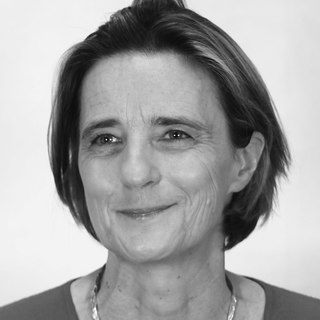
Attention deficit hyperactivity disorder (ADHD) is a neurodevelopmental disorder characterised by executive dysfunction occasioning symptoms of inattention, hyperactivity, impulsivity and emotional dysregulation that are excessive and pervasive, impairing in multiple contexts, and otherwise age-inappropriate.

Neurofeedback is a form of biofeedback that uses electrical potentials in the brain to reinforce desired brain states through operant conditioning. This process is non-invasive and typically collects brain activity data using electroencephalography (EEG). Several neurofeedback protocols exist, with potential additional benefit from use of quantitative electroencephalography (QEEG) or functional magnetic resonance imaging (fMRI) to localize and personalize treatment. Related technologies include functional near-infrared spectroscopy-mediated (fNIRS) neurofeedback, hemoencephalography biofeedback (HEG), and fMRI biofeedback.

Atomoxetine, sold under the brand name Strattera, is a medication used to treat attention deficit hyperactivity disorder (ADHD) and, to a lesser extent, cognitive disengagement syndrome. It may be used alone or along with psychostimulants. It is also used as a cognitive and executive functioning enhancer to improve self-motivation, persistence, attention, inhibition, and working memory. Use of atomoxetine is only recommended for those who are at least six years old. It is taken orally. Atomoxetine is a selective norepinephrine reuptake inhibitor and is believed to work by increasing norepinephrine and dopamine levels in the brain. The effectiveness of atomoxetine is comparable to the commonly prescribed stimulant medication methylphenidate.

Adderall and Mydayis are trade names for a combination drug called mixed amphetamine salts containing four salts of amphetamine. The mixture is composed of equal parts racemic amphetamine and dextroamphetamine, which produces a (3:1) ratio between dextroamphetamine and levoamphetamine, the two enantiomers of amphetamine. Both enantiomers are stimulants, but differ enough to give Adderall an effects profile distinct from those of racemic amphetamine or dextroamphetamine, which are marketed as Evekeo and Dexedrine/Zenzedi, respectively. Adderall is used in the treatment of attention deficit hyperactivity disorder (ADHD) and narcolepsy. It is also used illicitly as an athletic performance enhancer, cognitive enhancer, appetite suppressant, and recreationally as a euphoriant. It is a central nervous system (CNS) stimulant of the phenethylamine class.

Dopaminergic pathways in the human brain are involved in both physiological and behavioral processes including movement, cognition, executive functions, reward, motivation, and neuroendocrine control. Each pathway is a set of projection neurons, consisting of individual dopaminergic neurons.
Neuroplasticity, also known as neural plasticity or brain plasticity, is the ability of neural networks in the brain to change through growth and reorganization. It is when the brain is rewired to function in some way that differs from how it previously functioned. These changes range from individual neuron pathways making new connections, to systematic adjustments like cortical remapping or neural oscillation. Other forms of neuroplasticity include homologous area adaptation, cross modal reassignment, map expansion, and compensatory masquerade. Examples of neuroplasticity include circuit and network changes that result from learning a new ability, information acquisition, environmental influences, practice, and psychological stress.

Guanfacine, sold under the brand name Tenex (immediate-release) and Intuniv (extended-release) among others, is an oral alpha-2a agonist medication used to treat attention deficit hyperactivity disorder (ADHD) and high blood pressure. Guanfacine is FDA-approved for monotherapy treatment of ADHD, as well as being used for augmentation of other treatments, such as stimulants. Guanfacine is also used off-label to treat tic disorders, anxiety disorders, and post-traumatic stress disorder (PTSD).

Adele Dorothy Diamond is a professor of neuroscience at the University of British Columbia, where she is currently a Tier 1 Canada Research Chair in Developmental Cognitive Neuroscience. One of the pioneers in the field of developmental cognitive neuroscience, Diamond researches how executive functions are affected by biological and environmental factors, especially in children. Her discoveries have improved treatment for disorders such as phenylketonuria and attention-deficit hyperactivity disorder, and they have impacted early education.
Michael Matthias Merzenich is an American neuroscientist and professor emeritus at the University of California, San Francisco. He took the sensory cortex maps developed by his predecessors and refined them using dense micro-electrode mapping techniques. Using this, he definitively showed there to be multiple somatotopic maps of the body in the postcentral sulcus, and multiple tonotopic maps of the acoustic inputs in the superior temporal plane.
Brain training is a program of regular activities purported to maintain or improve one's cognitive abilities. The phrase “cognitive ability” usually refers to components of fluid intelligence such as executive function and working memory. Cognitive training reflects a hypothesis that cognitive abilities can be maintained or improved by exercising the brain, analogous to the way physical fitness is improved by exercising the body. Cognitive training activities can take place in numerous modalities such as cardiovascular fitness training, playing online games or completing cognitive tasks in alignment with a training regimen, playing video games that require visuospatial reasoning, and engaging in novel activities such as dance, art, and music.
Attention deficit hyperactivity disorder management options are evidence-based practices with established treatment efficacy for ADHD.

Earl Keith Miller is a cognitive neuroscientist whose research focuses on neural mechanisms of cognitive, or executive, control. Earl K. Miller is the Picower Professor of Neuroscience with the Picower Institute for Learning and Memory and the Department of Brain and Cognitive Sciences at Massachusetts Institute of Technology. He is the Chief Scientist and co-founder of SplitSage. He is a co-founder of Neuroblox.
Working memory training is intended to improve a person's working memory. Working memory is a central intellectual faculty, linked to IQ, ageing, and mental health. It has been claimed that working memory training programs are effective means, both for treating specific medical conditions associated with working memory deficit, as and for general increase in cognitive capacity among healthy neurotypical adults.

Cogmed is a cognitive training software program created in the lab of Torkel Klingberg, a neuroscientist at the Karolinska Institute. Dr. Klingberg was using it to present working memory challenges to people while he studied their brains using fMRI, to try to learn about neuroplasticity. When the studies appeared to show that the challenges improved working memory, Klingberg founded Cogmed in 2001, with financial backing from the Karolinska Institute and venture capitalists.
Barbara Jacquelyn Sahakian, is professor of clinical neuropsychology at the department of psychiatry and Medical Research Council (MRC)/Wellcome Trust Behavioural and Clinical Neuroscience Institute, University of Cambridge. She is also an honorary clinical psychologist at Addenbrooke's Hospital, Cambridge. She has an international reputation in the fields of cognitive psychopharmacology, neuroethics, neuropsychology, neuropsychiatry and neuroimaging.
NeuroRacer is a video game designed by a team of researchers at the University of California, San Francisco led by Adam Gazzaley as a way to help with mental cognition. It was designed as an "Adam Gazzaley intervention" for "top-down modulation deficits in older adults." A study on 60- to 85-year-olds showed that the multitasking nature of the game caused improvements in tasks outside of the game involving working memory and sustained attention. The game is presented as a driving simulator. Gameplay involves driving a vehicle down windy roads and pushing buttons when a sign appears.

Daphné Bavelier is a French cognitive neuroscientist specialized in brain plasticity and learning. She is full Professor at the University of Geneva in the Faculty of Psychology and Educational Sciences. She heads the Brain and Learning lab at Campus Biotech in Geneva, Switzerland.

Roi Cohen Kadosh is an Israeli-British cognitive neuroscientist notable for his work on numerical and mathematical cognition and learning and cognitive enhancement. He is a professor of Cognitive Neuroscience and the head of the School of Psychology at the University of Surrey.

Michael Paul Stryker is an American neuroscientist specializing in studies of how spontaneous neural activity organizes connections in the developing mammalian brain, and for research on the organization, development, and plasticity of the visual system in the ferret and the mouse.
EndeavorRx is a video game used to treat Attention Deficit Hyperactivity Disorder developed by Akili Interactive. It was based on a prototype game called NeuroRacer. NeuroRacer was developed by Akili Interactive and researchers at the University of San Francisco. The game runs on an engine known as the Akili Selective Stimulus Management engine. EndeavorRx was known as AKL-T01 or Project: EVO ADHD Treatment during its development. On June 15, 2020, it became the first ever video game to be approved by the FDA. It was approved to be used as a treatment for children with ADHD with the age range of 8–12. Five studies on over 600 children were conducted to measure the effectiveness of EndeavorRx. They found "a 36% improvement in at least one objective measure of attention." The side effects found by the researchers include frustration, dizziness, headaches, and aggression.












